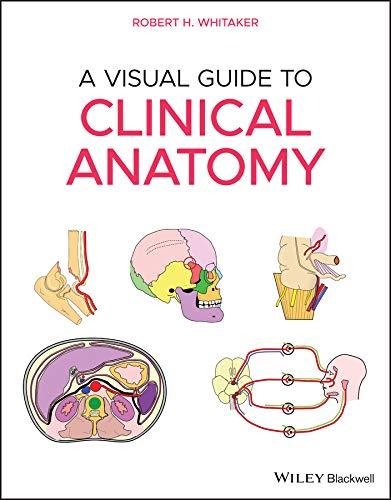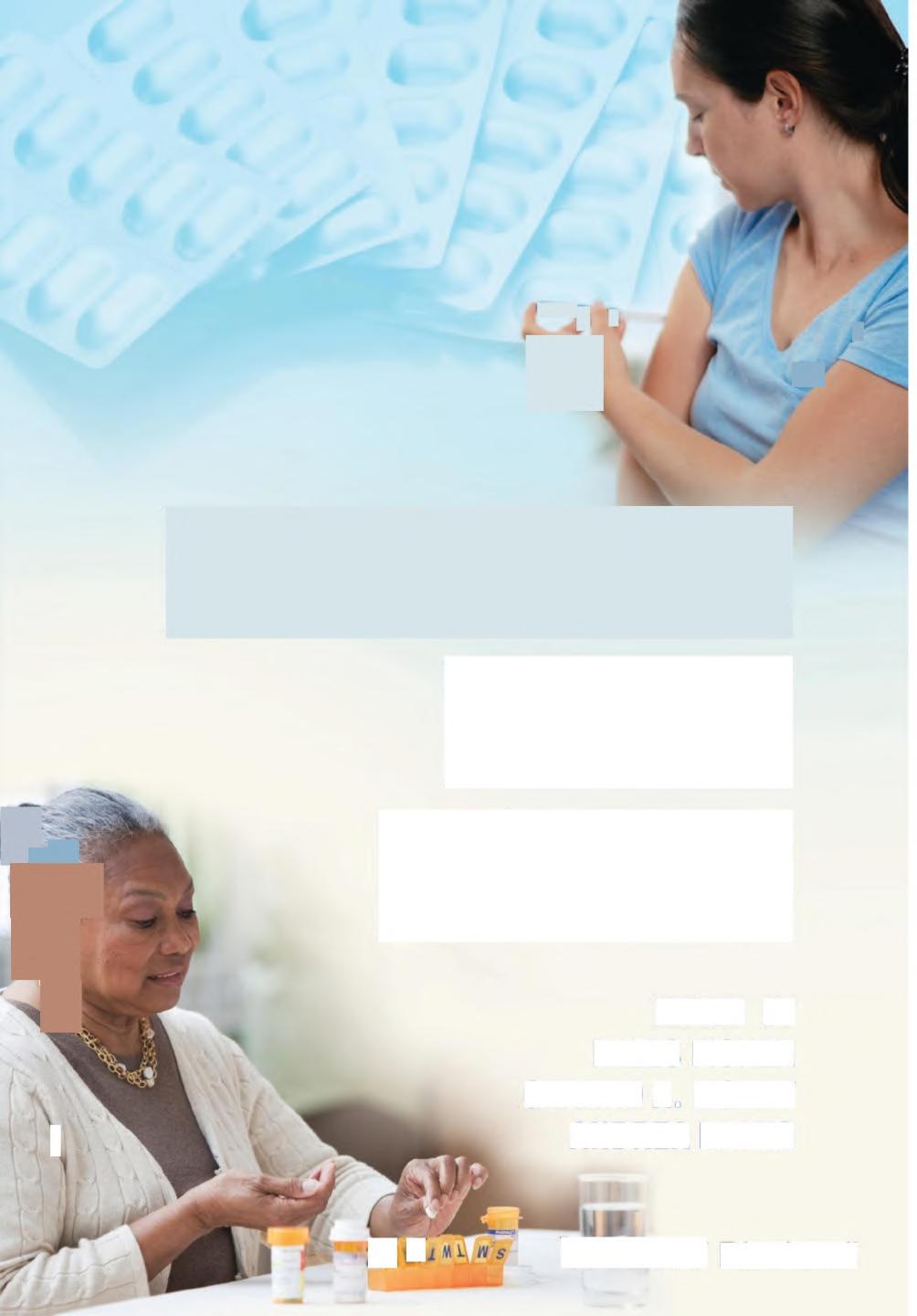Diabetes Drug Notes
Edited by MILES FISHER,
GERARD A. MCKAY, AND ANDREA LLANO
Glasgow Royal Infirmary, Glasgow, UK
This edition first published 2022 © 2022 John Wiley & Sons Ltd
All rights reserved. No part of this publication may be reproduced, stored in a retrieval system, or transmitted, in any form or by any means, electronic, mechanical, photocopying, recording or otherwise, except as permitted by law. Advice on how to obtain permission to reuse material from this title is available at http://www.wiley.com/go/ permissions.
The right of Miles Fisher, Gerard A. McKay, and Andrea Llano to be identified as the authors of the editorial material in this work has been asserted in accordance with law.
Registered Offices
John Wiley & Sons, Inc., 111 River Street, Hoboken, NJ 07030, USA
John Wiley & Sons Ltd, The Atrium, Southern Gate, Chichester, West Sussex, PO19 8SQ, UK
Editorial Office
9600 Garsington Road, Oxford, OX4 2DQ, UK
For details of our global editorial offices, customer services, and more information about Wiley products visit us at www.wiley.com.
Wiley also publishes its books in a variety of electronic formats and by print-on-demand. Some content that appears in standard print versions of this book may not be available in other formats.
Limit of Liability/Disclaimer of Warranty
The contents of this work are intended to further general scientific research, understanding, and discussion only and are not intended and should not be relied upon as recommending or promoting scientific method, diagnosis, or treatment by physicians for any particular patient. In view of ongoing research, equipment modifications, changes in governmental regulations, and the constant flow of information relating to the use of medicines, equipment, and devices, the reader is urged to review and evaluate the information provided in the package insert or instructions for each medicine, equipment, or device for, among other things, any changes in the instructions or indication of usage and for added warnings and precautions. While the publisher and authors have used their best efforts in preparing this work, they make no representations or warranties with respect to the accuracy or completeness of the contents of this work and specifically disclaim all warranties, including without limitation any implied warranties of merchantability or fitness for a particular purpose. No warranty may be created or extended by sales representatives, written sales materials or promotional statements for this work. The fact that an organization, website, or product is referred to in this work as a citation and/or potential source of further information does not mean that the publisher and authors endorse the information or services the organization, website, or product may provide or recommendations it may make. This work is sold with the understanding that the publisher is not engaged in rendering professional services. The advice and strategies contained herein may not be suitable for your situation. You should consult with a specialist where appropriate. Further, readers should be aware that websites listed in this work may have changed or disappeared between when this work was written and when it is read. Neither the publisher nor authors shall be liable for any loss of profit or any other commercial damages, including but not limited to special, incidental, consequential, or other damages.
Library of Congress Cataloging-in-Publication Data
Names: Fisher, Miles, editor. | McKay, Gerard A., editor. | Llano, Andrea, editor.
Title: Diabetes drug notes / edited by Miles Fisher, Gerard A. McKay, Andrea Llano.
Description: Hoboken, NJ : Wiley-Blackwell, 2022. | Includes bibliographical references and index. | Contents: Clinical pharmacology of antidiabetic drugs / Andrea Llano, Gerry McKay, and Ken Paterson -- Metformin / Joseph Timmons and James Boyle -- Sulfonylureas and meglitinides -- Joseph Timmons and James Boyle -- DPP-4 inhibitors / Sharon Mackin and Gemma Currie -- SGLT2 inhibitors / Miles Fisher, Andrea Llano, and Gerry McKay -- GLP-1 receptor agonists / Catherine Russell and John Petrie -- Animal and human insulin / Ken Paterson -- Short-acting insulin analogues / Kate Hughes and Gerry McKay -- Long-acting Insulin Analogues / Robert Lindsay -- Devices / David Carty -- Acarbose and alpha glucosidase inhibitors / Miles Fisher -- Glitazones and glitazars / Miles Fisher -- Other antidiabetic drugs / Maroria Oroko, Andrea Llano, and Miles Fisher -- Future antidiabetic drugs / Emma Johns and Miles Fisher -- Guidelines / Miles Fisher and Russell Drummond -- Prescribing antidiabetic drugs / Andrea Llano, Gerry McKay, Frances McManus, Catriona McClements, Joyce McKenzie, and Deborah Morrison.
Identifiers: LCCN 2022020904 (print) | LCCN 2022020905 (ebook) | ISBN 9781119785002 (paperback) | ISBN 9781119785019 (pdf) | ISBN 9781119785026 (epub) | ISBN 9781119785033 (ebook)
Subjects: MESH: Hypoglycemic Agents--pharmacology | Glycoside Hydrolase Inhibitors--pharmacology | Insulins-pharmacology | Diabetes Mellitus--drug therapy
Classification: LCC RC661.I6 (print) | LCC RC661.I6 (ebook) | NLM WK 825 | DDC 616.4/62061--dc23/ eng/20220608
LC record available at https://lccn.loc.gov/2022020904
LC ebook record available at https://lccn.loc.gov/2022020905
Cover image: © Milos Dimic/Getty Images, Jose Luis Pelaez/Getty Images, MirageC/Getty Images
Cover design by Wiley
Set in 10/12pt STIXTwoText by Integra Software Services Pvt. Ltd, Pondicherry, India
FOREWORD xx
PREFACE xxi
EDITORS AND CONTRIBUTORS xxii
Introduction 1
1 Clinical Pharmacology of Antidiabetic Drugs 2
Andrea Llano, Gerry McKay, and Ken Paterson
Introduction 2
Clinical Pharmacology 3
Introduction 3
Pharmacodynamics 3
Action on a Receptor 3
Action on an Enzyme 4
Membrane Channels 4
Cytotoxic 4
Dose–Response Relationship 4
Pharmacokinetics 5
Absorption 5
Distribution/Plasma Protein Binding 5
Clearance 6
Drug Metabolism and Elimination 6
Enzyme Induction and Inhibition 7
Renal Excretion 7
Drug Development and Clinical Trials 7
Introduction 7
Preclinical Development 8
Regulatory Approval 9
Clinical Trials 11
Microdosing 11
Phase 1 Trials 11
Phase 2 Trials 11
Phase 3 Trials 11
Phase 4 Trials 12
Drug Licensing of Antidiabetic Drugs 12
Cardiovascular Outcome Trials 12
Marketing Authorisation 14
Development and Licensing of Insulin 14
Insulin Regulatory Approval 14
Development and Approval of Biosimilar Insulin 16
Introduction 16
Insulin Production 16
Biosimilar vs. Generic Drugs 17
Regulatory Considerations for Biosimilars 17
Safety of Biosimilars 18
Interchangeability and Substitution 18
Prescribing Considerations for Biosimilars 18
Pharmacovigilance 19
Passive Pharmacovigilance 19
Active Pharmacovigilance 20
Pharmacoeconomics 21
Introduction 21
Utility Values 23
Health Economic Modelling 23
Sensitivity Analysis 24
Discounting 25
Indirect Comparison and Network Meta-analysis 25
Future Developments in Diabetes Clinical Pharmacology 26
Drug Development 26
Pharmacovigilance 27
Pharmacoeconomics 27
2 Metformin 30
Joseph Timmons and James Boyle
Introduction 30
History of Biguanides 31
Phenformin and Lactic Acidosis 31
Pharmacology 32
Mechanism of Action 32
Inhibition of Hepatic Glucose Production 33
Reduced Insulin Resistance 34
Intestinal Effects 34
Pharmacokinetics 35
Prescribing in Renal Impairment 35
Prescribing in Liver Disease 35
Prescribing in Heart Failure 35
Prescribing in Pregnancy 35
Glycaemic Efficacy 36
Safety and Side Effects 37
Lactic Acidosis 37
Outcome Trials 38
Cardiovascular Outcome Trials 38
UKPDS 38
HOME Study 39
SPREAD-DIMCAD 41
Renal Effects 42
Prevention of Type 2 Diabetes 42
DPP 42
IDPP 44
CANOE 44
Metformin in Type 1 Diabetes 45
REMOVAL 45
Place of Metformin in Current and Future Practice 46
3 Sulfonylureas and Meglitinides 49
Joseph Timmons and James Boyle
Introduction 49
History of Sulfonylureas 50
Pharmacology 51
Insulin Secretion from Beta Cells 51
Mechanism of Action 51
Insulin Secretion 51
Extra-pancreatic Actions 51
Pharmacokinetics 52
Gliclazide 52
Glimepiride 53
Glycaemic Efficacy 53
ADOPT 53
UKPDS 54
GRADE Study 54
Safety and Side Effects 55
Weight Gain 55
Hypoglycaemia 55
Other Side Effects 55
Outcome Trials 56
Cardiovascular Safety and Sulfonylureas 56
UGDP 56
UKPDS 57
ADVANCE 59
CAROLINA 60
TOSCA.IT 60
Meglitinides 61
Nateglinide 61
Repaglinide 61
Outcome Trials 62
NAVIGATOR 62
Place of Sulfonylureas and Meglitinides in Current and Future Practice 65
4 DPP-4 Inhibitors 67
Sharon Mackin and Gemma Currie
Introduction 67
Pharmacology 68
Structure and Function of Dipeptidyl Peptidase-4 68
Mechanism of Action 68
Pharmacodynamics and Pharmacokinetics 69
Sitagliptin 69
Saxagliptin 70
Vildagliptin 71
Alogliptin 72
Linagliptin 73
Other DPP-4 Inhibitors 73
Glycaemic Efficacy 75
VERIFY 75
GRADE 79
Safety and Side Effects 79
Side Effects 80
Pancreatitis and Pancreatic Cancer 80
Hepatic Side Effects of Alogliptin 82
Outcome Trials 82
Cardiovascular Outcome Trials 82
SAVOR-TIMI 53 84
EXAMINE 85
TECOS 86
CARMELINA and CAROLINA 87
Vildagliptin Meta-analysis 88
Summary of Cardiovascular Outcome Trials 89
Renal Outcomes 89
Saxagliptin 89
Alogliptin 90
Sitagliptin 90
Linagliptin 90
Summary of Renal Effects 91
The Place of DPP-4 Inhibitors in Current and Future Practice 91
5 SGLT2 Inhibitors 95
Miles Fisher, Andrea Llano, and Gerry McKay
Introduction 96
Pharmacology 96
Physiology of Sodium-dependent Glucose Transporters 96
Mechanism of Action 97
Pharmacodynamics and Pharmacokinetics 97
Dapagliflozin 97
Canagliflozin 98
Empagliflozin 99
Ertugliflozin 99
Sotagliflozin 100
Other SGLT2 Inhibitors 100
Glycaemic Efficacy 100
Comparisons of SGLT2 Inhibitors with GLP-1 Receptor Agonists 101
Additional Effects of SGLT2 Inhibitors 102
Body Weight 102
Blood Pressure 103
Side Effects and Safety 103
Genitourinary Infections 103
Diabetic Ketoacidosis 103
Amputation 104
Other Adverse Effects 105
Outcome Trials 105
Cardiovascular Outcome Trials in Diabetes 105
EMPA-REG OUTCOME 105
The CANVAS Program 108
DECLARE-TIMI 58 108
VERTIS CV 109
Meta-analysis of Cardiovascular Outcome Trials 109
Real-world Evidence of Cardiovascular Benefits 109
Renal Outcome Trials 110
CREDENCE 111
DAPA-CKD 112
SCORED 113
Empagliflozin 113
Ertugliflozin 114
Meta-analysis of Renal Outcomes 114
Real-world Evidence of Renal Benefit 115
Heart Failure Outcome Trials 116
6
DAPA-HF 116
The EMPEROR Trials Program 116
SOLOIST-WHF 118
Canagliflozin and Ertugliflozin 118
Meta-analysis of DAPA-HF and EMPEROR-Reduced 118
SGLT2 Inhibitors in Type 1 Diabetes 119
Dapagliflozin in Type 1 Diabetes 119
Sotagliflozin in Type 1 Diabetes 121
Efficacy and Safety of Other SGLT2 Inhibitors in Type 1 Diabetes 121
Diabetic Ketoacidosis 122
Regulatory Approval in Type 1 Diabetes 123
Use of SGLT2 Inhibitors in Other Diseases 123
DARE-19 123
Place of SGLT2 Inhibitors in Current and Future Practice 124
Type 2 Diabetes 124
Chronic Kidney Disease and Heart Failure 124
Type 1 Diabetes 125
GLP-1 Receptor Agonists 130
Catherine Russell and John Petrie
Introduction 130
Pharmacology 131
Glucagon-like Peptide-1 and the Incretin Effect 131
Mechanism of Action 131
Pancreatic Actions 131
Extra-pancreatic Actions 131
Pharmacodynamics and Pharmacokinetics 132
Exenatide 133
Lixisenatide 134
Liraglutide 134
Dulaglutide 135
Semaglutide 135
Other GLP-1 Receptor Agonists 136
Glycaemic Efficacy and Effect on Weight 137
Comparisons within Class 137
Comparisons with Other Antidiabetic Drugs 139
DPP-4 Inhibitors 139
SGLT2 Inhibitors 139
Insulin 139
Other Antidiabetic Drugs 140
Efficacy of Combinations of GLP-1 Receptor Agonists with Insulin 140
Other Effects of GLP-1 Receptor Agonists 141
Cardiovascular System 141
Lipids 142
Side Effects and Safety 142
Side Effects 142
Safety 142
Thyroid Cancer 142
Pancreatitis and Pancreatic Cancer 143
Cholelithiasis 143
Outcome Trials 143
Cardiovascular Outcome Trials 143
ELIXA 143
LEADER 145
SUSTAIN-6 146
EXSCEL 147
REWIND 148
Harmony Outcomes 149
PIONEER 6 149
AMPLITUDE-O 150
Meta-analysis of Cardiovascular Outcome Trials 151
Summary of Cardiovascular Outcome Trials 151
Renal Outcomes 152
Renal Outcomes from Cardiovascular Outcome Trials 152
Meta-analysis of Renal Outcomes from Cardiovascular Outcome Trials 153
Use of GLP-1 Receptor Agonists in Other Diseases 153
Overweight and Obesity 153
Nonalcoholic Fatty Liver Disease 155
Place of GLP-1 Receptor Agonists in Current and Future Practice 155
7 Animal and Human Insulins 161
Ken Paterson
Introduction 161
Insulin Structure 161
Insulin Receptors 162
Insulin Physiology 163
Production and Pharmacokinetic Modifications 165
Improved Purification 165
Time Action Prolongation 166
Insulin Zinc Suspension 166
Protamine Zinc Insulin 167
Isophane or Neutral Protamine Hagedorn Insulin 167
Biphasic Insulins 168
Unified Formulation 168
Sources of Insulin 169
Beef Insulin 169
Pork Insulin 169
Human Insulin 169
Hypoglycaemia and Human Insulin 170
Limitations of Older Insulins 170
Short-acting Insulins 171
Intermediate and Long-acting Insulins 171
Time–Action Profile 171
Morning (Fasting) Hyperglycaemia 172
Variability 173
Intensified Insulin Therapy 173
DCCT and EDIC 173
UKPDS 174
Side Effects of Intensified Insulin Therapy 175
Hypoglycaemia 175
Weight Gain 176
Place of Human Insulin in Current and Future Therapy 176
Insulin Therapy in Type 1 Diabetes 176
Insulin Therapy in Type 2 Diabetes 177
8 Short-acting Insulin Analogues 179
Kate Hughes and Gerry McKay
Introduction 179
Factors Affecting Absorption and Metabolism of Short-acting Insulin 180
Manufacturing Insulin Analogues 180
Short-acting Insulin Analogues 182
Insulin Lispro 182
Insulin Aspart 183
Insulin Glulisine 184
Meta-analysis of Short-acting Insulin Analogues 185
Biosimilar Short-acting Insulin Analogues 186
Second-generation Ultrafast-acting Insulin Analogues 186
Fast-acting Insulin Aspart 186
Ultra-rapid Insulin Lispro 188
Other Attempts to Improve Insulin Absorption and Inhaled Insulin 189
Technosphere Inhaled Insulin 190
Place of Short-acting Insulin Analogues in Current and Future Practice 190
Intensive Insulin Therapy 190
Structured Education 191
Alternative Routes of Insulin Delivery 191
9 Long-acting Insulin Analogues 194
Robert Lindsay
Introduction 195
Older Strategies to Extend the Action of Insulin 195
Factors Affecting the Absorption and Action of Insulin 195
Development of Long-acting Insulin Analogues 196
Strategies to Modify the Action of Long-acting Insulin Analogues 196
Long-acting Insulin Analogues 197
Insulin Glargine 197
Glycaemic Efficacy and Risk of Hypoglycaemia with Glargine 198
ORIGIN 198
Insulin Detemir 199
Glycaemic Efficacy and Risk of Hypoglycaemia with Detemir 200
4-T 201
Insulin Degludec 201
Glycaemic Efficacy and Risk of Hypoglycaemia with Degludec 201
DEVOTE 202
U300 Glargine 203
Glycaemic Efficacy and Risk of Hypoglycaemia with U300 Glargine 203
Biosimilar Long-acting Insulin Analogues 205
Other Long-acting Insulin Analogues 205
Combinations of Long- and Short-acting Insulin Analogues 206
Meta-analysis of Glycaemic Efficacy of Long-acting Insulin Analogues 207
Type 1 Diabetes 207
Type 2 Diabetes 207
Safety of Long-acting Insulin Analogues 209
The Place of Long-acting Insulin Analogues in Current and Future Practice 209
Advantages of Insulin Analogues 209
Patterns of Insulin Administration 210
Future Long-acting Insulin Analogues 210
10 Devices 214
David Carty
Introduction 214
Insulin Pens 215
History 215
Modern Insulin Pens 215
Insulin Pumps 215
History 215
Modern Insulin Pumps 216
11
Glycaemic Efficacy of Insulin Pumps 216
Safety of Insulin Pumps 217
Potential Disadvantages of Pump Therapy 217
Self-monitoring of Blood Glucose 218
Blood Glucose Monitors 218
Continuous Glucose Monitoring 218
Intermittently Scanned (Flash) Continuous Glucose Monitoring 220
Real-time Continuous Glucose Monitoring 221
Accuracy of Continuous Glucose Monitoring 221
Ambulatory Glucose Profiles 221
Time in Range 221
Efficacy of Continuous Glucose Monitoring 223
Linkage of Continuous Glucose Monitoring to Insulin Pumps 223
Low-glucose Suspend 223
Hybrid Closed Loop 224
Efficacy of Closed Loop Systems 225
DIY Closed Loop 225
Guidelines on the Use of Devices 225
Insulin Pumps 225
Continuous Glucose Monitoring 226
Place of Devices in Current and Future Practice 227
Acarbose and Alpha Glucosidase Inhibitors 229
Miles Fisher
Introduction 229
Pharmacology 230
Mechanism of Action 230
Acarbose 230
Other Alpha Glucosidase Inhibitors 231
Glycaemic Efficacy 231
Safety and Side Effects 232
Outcome Trials 232
Prevention of Type 2 Diabetes 232
STOP-NIDDM 232
Voglibose Ph-3 Study 234
Cardiovascular Outcome Trials 235
Meta-analysis of Cardiovascular Events with Acarbose 235
ACE 236
Meta-analysis of Cardiovascular Events with Alpha Glucosidase Inhibitors 237
Place of Alpha Glucosidase Inhibitors in Current and Future Practice 237
12 Glitazones and Glitazars 239
Miles Fisher
Introduction 239
Pharmacology 240
Mechanism of Action 240
Pharmacokinetics 241
Pioglitazone 241
Glycaemic Efficacy 241
ADOPT 241
Other Effects of Glitazones 242
Safety and Side Effects 242
Side Effects 242
Safety 243
Cardiovascular Safety 243
Heart Failure 244
Bone Fractures 244
Bladder Cancer 245
Outcome Trials 245
Cardiovascular Outcome Trials 245
RECORD 245
TIDE 247
PROactive 247
IRIS 249
TOSCA.IT 250
Prevention of Type 2 Diabetes 251
DREAM 251
Other Trials on the Prevention of Diabetes 251
Glitazars 252
Aleglitazar 253
Saroglitazar 253
Place of Glitazones and in Current and Future Practice 253
Type 2 Diabetes 253
Prevention of Diabetes 254
13 Other Antidiabetic Drugs 257
Maroria Oroko, Andrea Llano, and Miles Fisher
Introduction 257
Pramlintide 258
Pharmacology 258
Glycaemic Efficacy 259
Efficacy in Type 1 Diabetes 259
Efficacy in Type 2 Diabetes 259
Safety 260
Colesevelam 260
Pharmacology 260
Glycaemic Efficacy 261
Cardiovascular Safety 262
Bromocriptine 262
Pharmacology 262
Glycaemic Efficacy 263
Cylcoset Safety Trial 263
Hydroxychloroquine 264
Pharmacology 265
Glycaemic Efficacy 265
Antiobesity Drugs 265
Orlistat 266
Pharmacology 266
Glycaemic Efficacy 266
XENDOS 267
Naltrexone/Bupropion 268
Pharmacology 268
Efficacy 268
Cardiovascular Safety 268
Phentermine and Phentermine/Topiramate 269
Pharmacology 269
Efficacy 269
Cardiovascular Safety 270
Place of Other Drugs in Current and Future Practice 270
Type 1 Diabetes 270
Type 2 Diabetes 271
14 Future Antidiabetic Drugs 274
Emma Johns and Miles Fisher
Introduction 274
Dual and Triple Agonists 275
Physiology 275
GLP-1 275
GIP 275
Glucagon 277
Pharmacology of Multiagonist Therapies 277
GLP-1/GIP Receptor Dual Agonists 278
Tirzepatide 278
NNC0090-2746 285
GLP-1/Glucagon Receptor Dual Agonists 285
Cotadutide 285
Bamadutide 286
GLP-1/Glucagon Receptor Dual Agonists in Non-alcoholic Fatty Liver Disease 287
Triple Agonists 287
Imeglimin 288
Pharmacology 288
Mechanism of Action 288
Pharmacokinetics 288
Glycaemic Efficacy and Safety 288
Regulatory Status 290
Place of New Antidiabetic Drugs in Future Practice 291
15 Guidelines on Antidiabetic Drugs 294
Miles Fisher and Russell Drummond
Introduction 295
Evidence-based Guidelines 295
Consensus Reports 295
Common Approaches and HbA1c Targets 295
Guidelines on the Use of Antidiabetic Drugs in Type 2 Diabetes 298
NICE 298
SIGN 300
ICGP 300
EASD and ADA Consensus Reports 302
ESC 305
IDF 307
Guidelines on the Management of Type 1 Diabetes 308
NICE 308
SIGN 308
ADA 310
ADA/ESD Consensus Report on the Management of Type 1 Diabetes in Adults 310
Special Patient Groups 311
Use of Antidiabetic Drugs in Pregnancy 311
Use of Antidiabetic Drugs in Patients with Kidney Disease 313
KDIGO 313
ABCD 314
Use of Antidiabetic Drugs during Ramadan 315
Use of Antidiabetic Drugs in Under-resourced Countries 316
Place of Guidelines in Current and Future Practice 318
16 Prescribing Antidiabetic Drugs 322
Andrea Llano, Gerry McKay, Frances McManus, Catriona McClements, Joyce McKenzie, and Deborah Morrison
Introduction 322
Why Prescribe? 323
Therapeutic Inertia 323
Introduction 323
Causes of Therapeutic Inertia 324
Clinician-related Factors 324
Patient-related Factors 325
Healthcare System Factors 326
Overcoming Inertia 326
Polypharmacy 326
Introduction 326
Detecting and Managing Polypharmacy 327
Nonadherence 329
Introduction 329
Improving Adherence 330
The Patient with Problematic Hypoglycaemia 330
Introduction 330
Problematic Hypoglycaemia 331
Management of Problematic Hypoglycaemia 331
Identify and Characterise Hypoglycaemia 332
Review Risk Factors for Problematic Hypoglycaemia 332
Review Patient Education and Behaviour 332
Review Insulin 333
Prescribing in Renal Impairment 333
Introduction 333
Reduced Absorption 335
Increased Bioavailability 335
Reduced Renal Clearance 335
Metformin 335
Pioglitazone 335
Acarbose 336
Sulfonylureas and Meglitinides 336
Incretin-based Therapies 336
SGLT2 Inhibitors 336
Insulin 336
Prescribing in Liver Disease 337
Introduction 337
Liver Disease and Diabetes 337
Reduced Drug Absorption 338
Increased Volume of Distribution 339
Altered Protein Binding 339
Reduced Metabolism 339
Hepatic Blood Flow 339
Reduced Excretion 339
Metformin 339
Pioglitazone 339
Sulfonylureas and Meglitinides 339
Incretin-based Therapies 340
SGLT2 Inhibitors 340
Insulin 340
Acarbose 340
Prescribing in Cardiovascular Disease 340
Diabetes and Coronary Artery Disease 340
Glycaemic Control 342
Choosing Antidiabetic Drugs with Cardiovascular Benefit 345
Management of Other Cardiovascular Risk Factors 345
Blood Pressure Management 345
Lipid Management 345
Antiplatelet Therapy 345
Acute Coronary Syndromes 345
Diabetes and Heart Failure 346
Pioglitazone 346
Saxagliptin 346
GLP-1 Receptor Agonists 346
SGLT2 Inhibitors 347
Prescribing in Pregnancy 347
Introduction 347
Antidiabetic Drugs in Pregnancy 347
Other Drugs Used in Pregnancy 348
Breastfeeding 348
Prescribing in the Young 348
Prescribing in the Elderly 349
Introduction 349
Hypoglycaemia in the Elderly 350
The Patient with Type 1 Diabetes: a Therapeutic Journey (an Illustrative Case) 350
The Patient with Type 2 Diabetes: a Therapeutic Journey (an Illustrative Case) 351
Future Developments in Prescribing in Diabetes 353
APPENDIX 357
INDEX 359
Editors and contributors
Editors
Miles Fisher, MBChB, MD, FRCP
Formerly Consultant Physician, Department of Diabetes, Endocrinology and Clinical Pharmacology, Glasgow Royal Infirmary, 84 Castle Street, Glasgow G4 0SF, UK
Honorary Professor, University of Glasgow, Glasgow, UK miles.fisher@ggc.scot.nhs.uk
Gerard A. McKay, BSc (Hons), MBChB, FRCP, FBPhS
Consultant Physician, Department of Diabetes, Endocrinology and Clinical Pharmacology, Glasgow Royal Infirmary, 84 Castle Street, Glasgow G4 0SF, UK
Honorary Clinical Associate Professor, University of Glasgow, Visiting Professor, University of Strathclyde, Glasgow, UK gerard.mckay@ggc.scot.nhs.uk
Andrea Llano, BSc (Hons), MBChB, MRCP
Consultant Physician, Department of Diabetes, Endocrinology and Clinical Pharmacology, Glasgow Royal Infirmary, 84 Castle Street, Glasgow G4 0SF, UK
Honorary Clinical Lecturer, University of Glasgow, Glasgow, UK andrea.llano@ggc.scot.nhs.uk
Contributors
James Boyle, MBChB, MD, MSc, FRCP
Consultant Physician, Department of Diabetes, Endocrinology and Clinical Pharmacology, Glasgow Royal Infirmary, 84 Castle Street, Glasgow G4 0SF, UK
Honorary Clinical Associate Professor, University of Glasgow, Glasgow, UK
David Carty, MBChB, PhD, FRCP
Consultant Physician, Department of Diabetes, Endocrinology and Clinical Pharmacology, Glasgow Royal Infirmary, 84 Castle Street, Glasgow G4 0SF, UK
Honorary Clinical Senior Lecturer, University of Glasgow, Glasgow, UK
Gemma Currie, MBChB, MRCP, PhD
Consultant Physician, Department of Diabetes, Endocrinology and Clinical Pharmacology, Glasgow Royal Infirmary, 84 Castle Street, Glasgow G4 0SF, UK
Honorary Clinical Senior Lecturer, University of Glasgow, Glasgow, UK
Russell Drummond, BSc (Hons), MBChB, MD, FRCP
Consultant Physician, Department of Diabetes, Endocrinology and Clinical Pharmacology, Glasgow Royal Infirmary, 84 Castle Street, Glasgow G4 0SF, UK
Honorary Clinical Associate Professor, University of Glasgow, Glasgow, UK
Miles Fisher, MBChB, MD, FRCP
Formerly Consultant Physician, Department of Diabetes, Endocrinology and Clinical Pharmacology, Glasgow Royal Infirmary, 84 Castle Street, Glasgow G4 0SF, UK
Honorary Professor, University of Glasgow, Glasgow, UK
Kate Hughes, MBChB, MRCP, PhD
Consultant Physician, Department of Diabetes, Endocrinology and Clinical Pharmacology, Glasgow Royal Infirmary, 84 Castle Street, Glasgow G4 0SF, UK
Emma Johns, MBChB, MRCP, PhD
Specialty Trainee in Diabetes and Endocrinology, Department of Diabetes, Endocrinology and Clinical Pharmacology, Glasgow Royal Infirmary, 84 Castle Street, Glasgow G4 0SF, UK
Robert Lindsay, BSc, MBChB, PhD, FRCP
Reader in Diabetes and Endocrinology, Institute of Cardiovascular and Medical Sciences, University of Glasgow, Glasgow, UK
Honorary Consultant Physician, NHS Greater Glasgow and Clyde, Glasgow, UK
Andrea Llano, BSc (Hons), MBChB, MRCP
Consultant Physician, Department of Diabetes, Endocrinology and Clinical Pharmacology, Glasgow Royal Infirmary, 84 Castle Street, Glasgow G4 0SF, UK
Honorary Clinical Lecturer, University of Glasgow, Glasgow, UK
Sharon Mackin, MBChB (Hons), MRCP (Diabetes and Endocrinology), MD
Consultant Physician, Department of Diabetes, Endocrinology and Clinical Pharmacology, Glasgow Royal Infirmary, 84 Castle Street, Glasgow G4 0SF, UK
Honorary Clinical Senior Lecturer, University of Glasgow, Glasgow, UK
Catriona McClements, MBChB
Senior Clinical Fellow, Department of Diabetes, Endocrinology and Clinical Pharmacology, Glasgow Royal Infirmary, Glasgow, UK
Gerard A. McKay, BSc (Hons), MBChB, FRCP, FBPhS
Consultant Physician, Department of Diabetes, Endocrinology and Clinical Pharmacology, Glasgow Royal Infirmary, 84 Castle Street, Glasgow G4 0SF, UK
Honorary Clinical Associate Professor, University of Glasgow, Visiting Professor, University of Strathclyde, Glasgow, UK
Joyce McKenzie, BSc, MBChB, MD
Specialty Doctor in Diabetes, Department of Diabetes and Endocrinology, New Stobhill Hospital, Glasgow, UK
Frances McManus, BSc (MedSci), MBChB, MRCP, PhD
Consultant Physician, Consultant Physician, Department of Diabetes, Endocrinology and Clinical Pharmacology, Glasgow Royal Infirmary, 84 Castle Street, Glasgow G4 0SF, UK
Deborah Morrison, MBChB, MRCP, PhD, MRCGP
General Practitioner with a special interest in diabetes, Department of Diabetes and Endocrinology, New Stobhill Hospital, Glasgow, UK
Honorary Clinical Lecturer, University of Glasgow, Glasgow, UK
Maroria Oroko, BSc (Hons), MBChB, MRCP
Specialty Trainee in Diabetes and Endocrinology, Department of Diabetes, Endocrinology and Clinical Pharmacology, Glasgow Royal Infirmary, 84 Castle Street, Glasgow G4 0SF, UK
Ken Paterson, MBChB, FRCP, FFPM, FBPhS
Formerly Consultant Physician, Department of Diabetes, Endocrinology and Clinical Pharmacology, Glasgow Royal Infirmary, 84 Castle Street, Glasgow G4 0SF, UK
Honorary Senior Research Fellow, University of Glasgow, Glasgow, UK
John Petrie, BSc (Hons), MBChB, PhD, FRCP
Professor of Diabetic Medicine, Institute of Cardiovascular and Medical Sciences, University of Glasgow, Glasgow, UK
Honorary Consultant Physician, Department of Diabetes, Endocrinology and Clinical Pharmacology, Glasgow Royal Infirmary, 84 Castle Street, Glasgow G4 0SF, UK
Catherine Russell, MBChB, MRCP
Specialty Trainee in Diabetes and Endocrinology, Department of Diabetes, Endocrinology and Clinical Pharmacology, Glasgow Royal Infirmary, Glasgow, UK
Joseph Timmons, BMSc (Hons), MBChB (Hons), MRCP
Clinical Lecturer in Diabetes and Endocrinology, Institute of Cardiovascular and Medical Sciences, University of Glasgow, Glasgow, UK
Honorary Specialty Trainee in Diabetes and Endocrinology, NHS Greater Glasgow and Clyde, Glasgow, UK
Clinical Pharmacology of Antidiabetic Drugs
Andrea Llano, Gerry McKay, and Ken Paterson
key points
• Clinical pharmacology studies the relationship between drugs and the body and has a crucial role in the development of new therapies.
• Pharmacodynamics describes how a drug exerts its actions and pharmacokinetics is the processes a drug undergoes (absorption, distribution, metabolism and excretion).
• The drug development and regulatory process is lengthy and new medicines need to demonstrate safety, efficacy and quality. In addition, drugs intended to be used in diabetes require demonstration of cardiovascular safety.
• Pharmacoeconomics allows the provision of cost-effective therapies to those who need them and is an important tool when there is an increasing demand for healthcare and limited resource.
Introduction
Clinical pharmacology describes all aspects of the relationship between drugs and humans. An understanding not only allows for the discovery and development of new drugs that influence the course of disease, but also a better understanding of how drugs work can aid the prescriber in partnership with the patient to ensure that the most appropriate drug is chosen. This is relevant for prescribing in diabetes
Diabetes Drug Notes, First Edition. Edited by Miles Fisher, Gerard A. McKay, and Andrea Llano. © 2022 John Wiley & Sons Ltd. Published 2022 by John Wiley & Sons Ltd.
given the increase in antidiabetic drugs that are now available for glucose lowering, many with additional benefits. Choosing the correct antidiabetic drug (‘antihyperglycaemic’ and ‘oral hypoglycaemic’ are other terms used) is complicated in many cases by the need for wider cardiovascular risk management and the polypharmacy that can result from managing established complications and other co-morbidities. Before getting to the individual with diabetes, antidiabetic drugs have to go through a lengthy development process underpinned by the requirement to show safety, efficacy and quality.
A serendipitous approach to drug discovery and development based on observations and careful measurement of response has been replaced by a deeper understanding of biochemical and pathophysiological processes that influence disease. This has led to the synthesis of specific agents (chemical or biological) with specific actions. Measurement of drug concentrations in plasma and correlation with effect have aided drug development. The development of genomics and proteomics has added further sophistication such that individualisation of drug choice is a much more realistic prospect.
Clinical Pharmacology
Introduction
The dose–response relationship within an individual is a measure of sensitivity to a drug. This has two components: pharmacokinetics and pharmacodynamics. Pharmacokinetics describes the dose–concentration relationship, and pharmacodynamics describes the concentration–effect relationship. Understanding pharmacodynamics and pharmacokinetics is fundamental to the process of drug development, e.g. selecting the appropriate dose to ensure that the concentration of drug at the site of action is likely to have a therapeutic effect. Understanding pharmacokinetics and pharmacodynamics is relevant to clinical practice as it allows optimisation of therapeutic interventions for the individual being treated [1].
Pharmacodynamics
The effect that a drug has on the body can often be explained through a specific mechanism of action. This can be through action on specific receptors, enzymes or membrane ionic channels or by a direct cytotoxic action.
Action on a Receptor
A receptor is normally a protein situated on the cell membrane or within the cell. Drugs bind to the receptors and can act in three ways:
• An agonist stimulates the receptor to produce an effect.
• An antagonist blocks the receptor from being activated by an agonist.
• A partial agonist stimulates the receptor to a limited extent but blocks it from being stimulated by naturally occurring agonists.
For antidiabetic drugs the main type of effect seen at receptors is an agonist effect. This can be seen for sulfonylureas, which bind to SU receptors on beta cells, and PPAR gamma agonists, which act on nuclear receptors to increase transcription of insulinsensitive genes.
Action on an Enzyme
Enzymes are proteins that, through interaction with substrates, result in activation or inhibition. Although the mechanism of action of metformin is poorly understood, part of its effect in diabetes is through activated AMP kinase. Another diabetes class acting through an effect on enzymes is DPP-4 inhibitors. These drugs inhibit the action of dipeptidyl peptidase-4, allowing for the prolongation of the action of endogenous incretins GLP-1 and GIP.
Membrane Channels Some drugs exert their action through an effect on membrane channels. SGLT 2 inhibitors work by blocking the sodium glucose co-transporter 2, resulting in the loss of glucose and sodium in urine.
Cytotoxic This mechanism of action is more relevant to drugs used to treat cancer.
Dose–Response Relationship When thinking about drugs an understanding of dose response is important. Dose–response relationships can be steep or flat (Figure 1.1). In the treatment of diabetes with insulin, a flat dose–response curve is
FIGURE 1.1 Dose–response relationships for drugs. Schematic examples of a drug (a) with a steep dose– (or concentration–) response relationship in the therapeutic range, and (b) a flat dose– (or concentration–) response relationship within the therapeutic range.
(a)
(b)
Doss Therapeutic
desirable for background insulin, but a steep dose–response curve is desirable for prandial insulin. In clinical practice the maximum therapeutic effect might not be achieved because of the emergence of undesirable effects. In drug development, if too high a dose is chosen it may be that the success of the drug is hampered by the side effects, e.g. in the case of the DPP-4 inhibitor vildagliptin, at a higher dose liver function tests need to be monitored, which is not the case for other drugs in the class. It is very important to consider this in drug development both for the desired effect and for adverse effects. This leads to the concept of therapeutic range. The difference between the concentration causing a desired effect and the concentration causing an adverse effect is termed the therapeutic index, a measure of a drug’s safety.
Dose–response curves can be influenced by genetics, environment and disease, and have two components: dose–plasma concentration and plasma concentration–effect. The ability to develop assays to measure drug concentration has allowed a better understanding of the variability in response between individuals but also for some drugs with a narrow therapeutic index the ability to perform therapeutic drug monitoring.
Pharmacokinetics
Absorption After drugs have been given orally, they can be considered to have an absorption rate and bioavailability. By slowing absorption, the dose–concentration relationship can be smoothed out, giving a more sustained effect and minimising side effects, e.g. Glucophage SR® (slow-release metformin). Subcutaneous absorption of insulin can also be manipulated to provide the desired effect, both to make absorption quicker, which is desirable for prandial insulin, and to make it slower, which is desirable for basal insulin. Bioavailability is a term used to describe the fraction of drug that gets into the systemic circulation. GLP-1 receptor agonists like most peptide-based drugs generally cannot be given orally owing to them being digested, so they need to be given parenterally to get sufficient quantities into the systemic circulation. However, one oral preparation of GLP-1 receptor agonist is now available that relies on a sophisticated delivery method and at a much higher dose than the parenteral preparation to achieve sufficient systemic exposure for the desired clinical effect (see Chapter 6). Other orally administered drugs can undergo extensive first-pass metabolism in the liver, resulting in a significant reduction in systemic exposure and clinical effect.
Distribution/Plasma Protein Binding When a drug gets into the systemic circulation it is then distributed to the tissues. This process will be dependent on the properties of the drug, in particular protein binding and lipid solubility factors. In practice protein binding has little in the way of clinical relevance, but if a drug has low protein binding and is highly lipid soluble, it will have only a small amount in the circulation and thus will be considered to have a high volume of distribution. In real terms this has more of an impact on drug development.
Clearance Clearance is the sum of all of the drug eliminated from the body and mostly depends on hepatic metabolism and renal excretion. If a drug is given by intravenous infusion or repeated doses orally, there will come a point at which a balance is reached between the drug entering and the drug leaving the body. This results in a steady-state concentration in the plasma or serum (Css). A constant-rate intravenous infusion will yield a constant Css, while a drug administered orally at regular intervals will result in fluctuation between peak and trough concentrations (Figure 1.2). Clearance depends on the liver and/or kidneys eliminating a drug and will be affected by diseases that affect these organs either directly or via blood flow to these organs. In stable clinical conditions when clearance remains constant it is directly proportional to dose rate, so-called first-order or linear kinetics. Few drugs show zero-order kinetics, e.g. alcohol when eliminating enzymes become saturated. Following a single intravenous bolus dose, it is possible to work out the time that it takes for elimination to result in half the original concentration of the drug being present (the half-life or t1/2) and through a number of complex equations, the time at which steady state will be achieved after starting a regular treatment schedule or after any change in dose can be predicted. Generally this takes four to five half-lives.
Drug Metabolism and Elimination Drugs that are already water soluble are generally excreted unchanged by the kidney. Lipid-soluble drugs are not easily excreted by the kidney because, following glomerular filtration, they are largely reabsorbed from the proximal tubule. The first step in the elimination of such lipid-soluble drugs is metabolism to more polar (water-soluble) compounds. This is achieved mainly in the liver.
Metabolism generally occurs in two phases:
FIGURE 1.2 Steady-state concentration–time profile for an oral dose (—) and a constant rate intravenous infusion (- - - - -).











